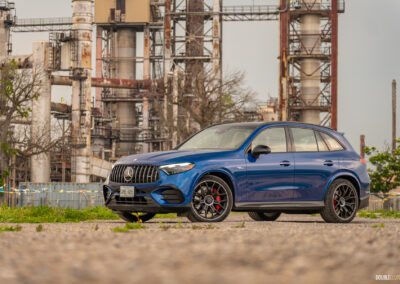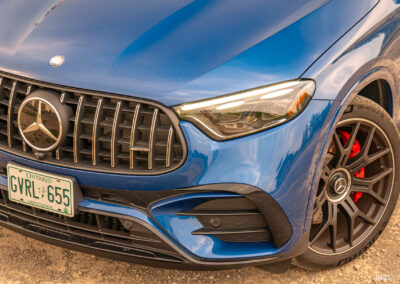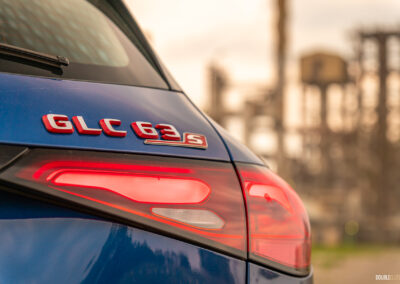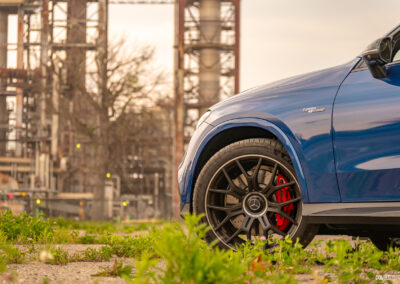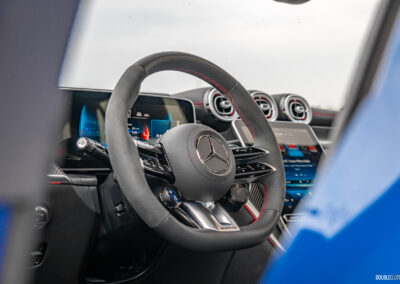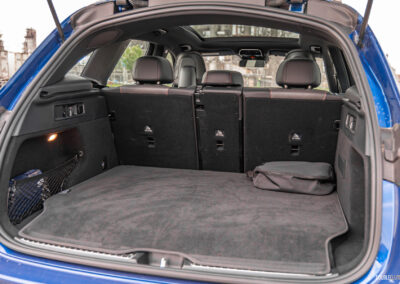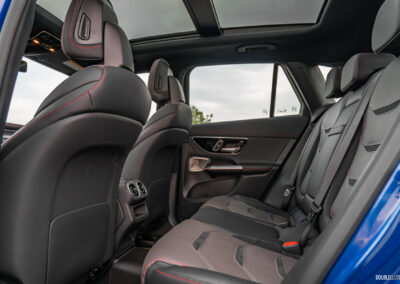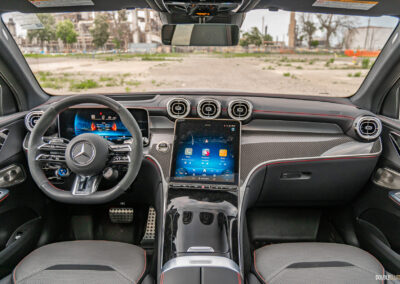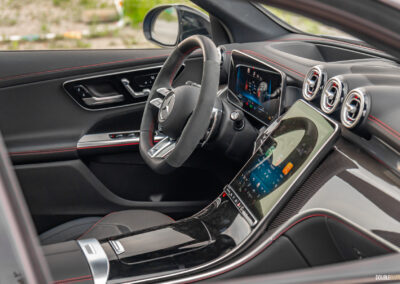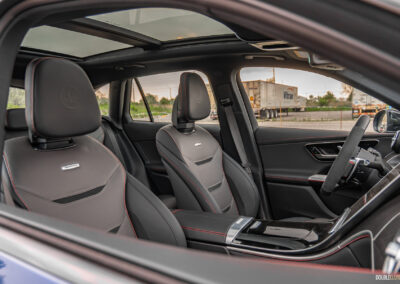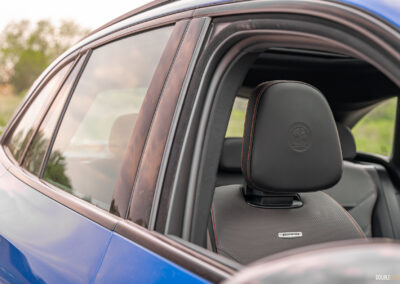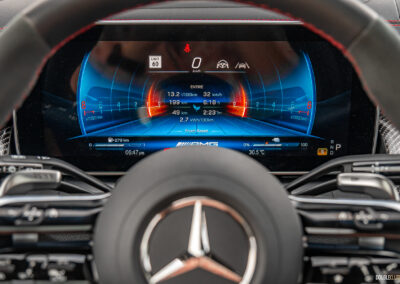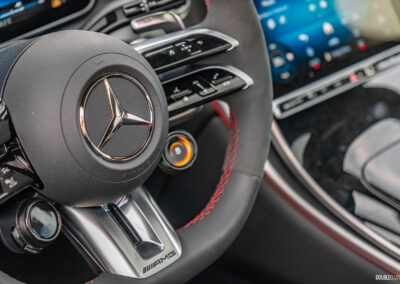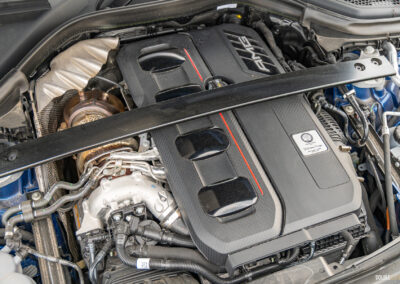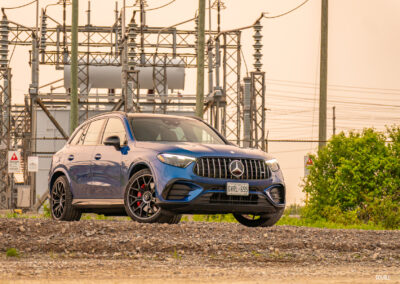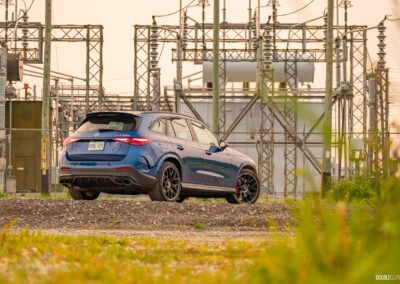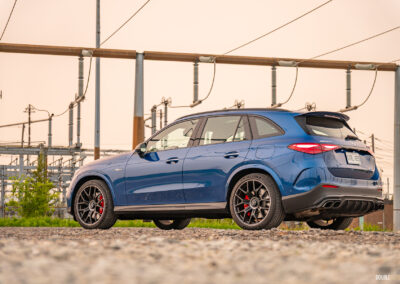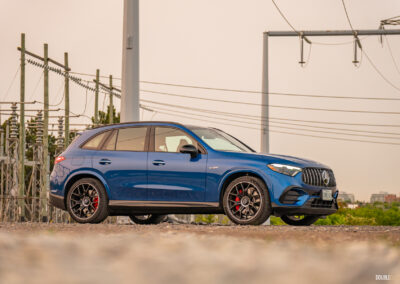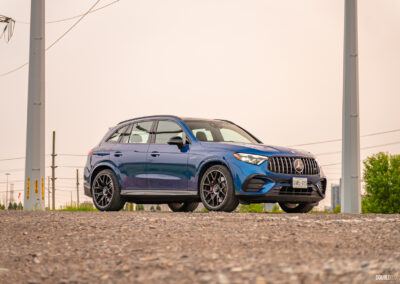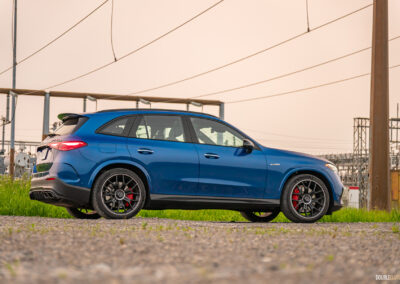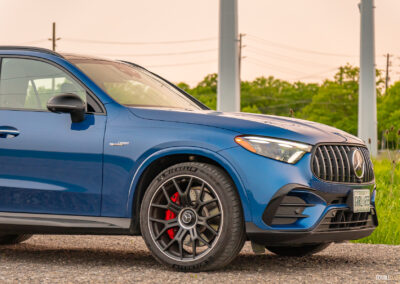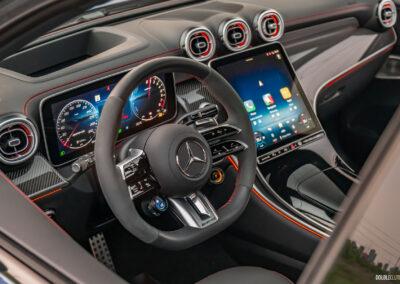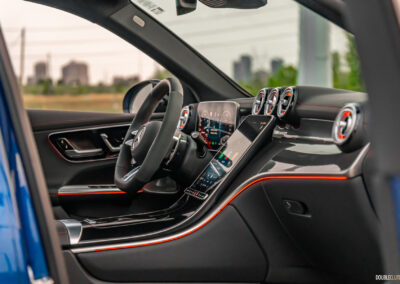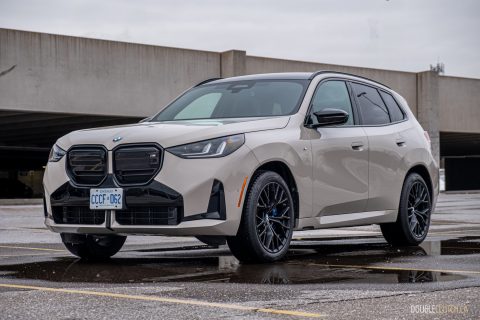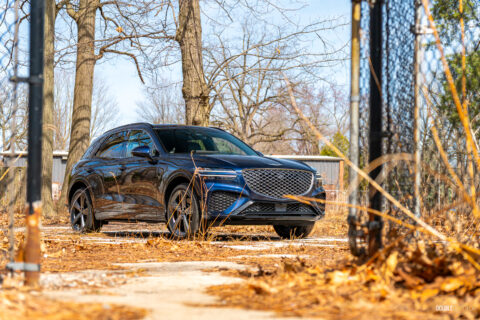Here’s a sneak peek at how the sausage is made: our car schedule goes out for months, and while things do crop up at the last minute, we typically know well in advance what we’re driving. As you’re reading this, our managing editor is scheduling cars out to the first week of school — so much for summer vacation — and while we have a section specifically for calling dibs, I seldom use it. Until this 2025 Mercedes-AMG GLC 63 S cropped up on the calendar.
Every one zee Germans has a four-point-something-litre, twin-turbocharged V8 to power the badass flagships in their stable. Mercedes’ interpretation is an absolute gem, made all the better when imbued with more muscle and hand-assembled at AMG’s old engine workshop. This characterful, meaty, and mighty V8 gave any of Mercedes’ 63-series AMG models an extra degree of power and providence over their lesser counterparts … until very recently, when they dropped the V8 from the compact C 63 sedan and GLC 63 crossover in favour of a small four cylinder plug-in hybrid powertrain.
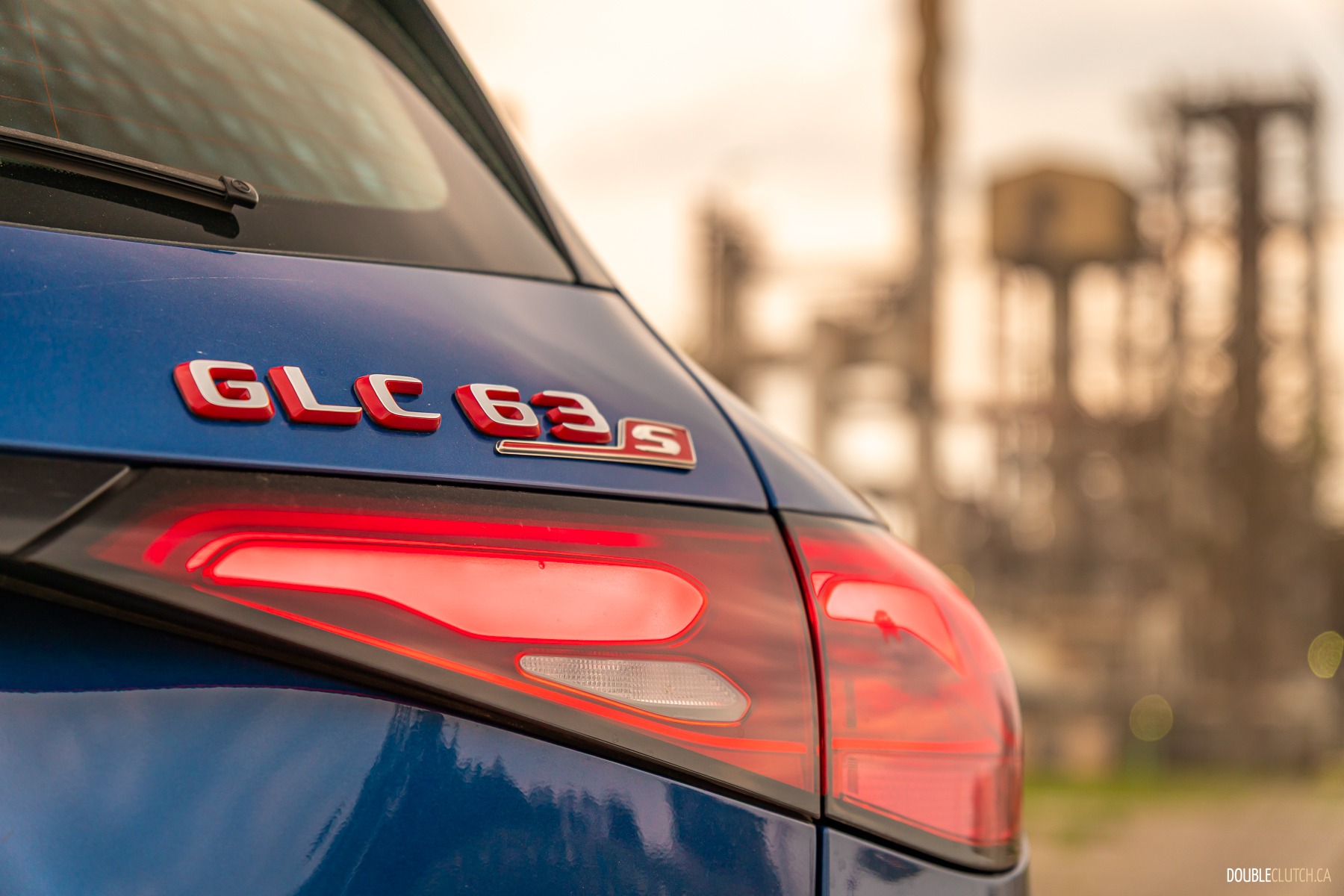
Wherefore art thou, V8?
Mercedes-Benz maintains a fairly robust press fleet locally, but curiously omitted the C 63 PHEV. We’ve been openly critical of Mercedes’ current direction, and you’ll know I’m especially guilty of this if you listen to our podcast. But they’ve never reached out for a retraction, never tried to withhold vehicles from us, and always taken it on the chin, so to speak. So, the decision to not make a C 63 available didn’t go unnoticed. It certainly didn’t help that the C 43 we sampled around the same time, which shares a milder version of the same powertrain, felt like it needed more time in the oven.
To put it charitably, the decision to abandon the V8 in these fun-sized Benzes has been poorly received. Sales of the C 63 are “close to zero” and the internet has embraced this schadenfreude to dunk on Mercedes, highlighting their failure to sell these things as proof positive that replacing displacement with modern electrification technology, fewer cylinders, and more turbo boost are all miserable failures. I, too, have been openly critical of Mercedes’ worrying direction in their other vehicles and have never been a fan of downsized compliance motors, but I wasn’t going to write this off without seeing it for myself.
Moreover, I was simply morbidly curious. As much as people like to be reductionist and denounce everything they disagree with as dumb, Mercedes’ product planners aren’t stupid. Overly hubristic maybe, but they wouldn’t have fielded a four-cylinder, plug-in hybrid AMG if they didn’t think it would rock. I appreciate ambition and the desire to do things differently; chopping a bank of cylinders, then replacing it with a volleyball-sized turbo and 6 kW of lithium-ion power is definitely … different.
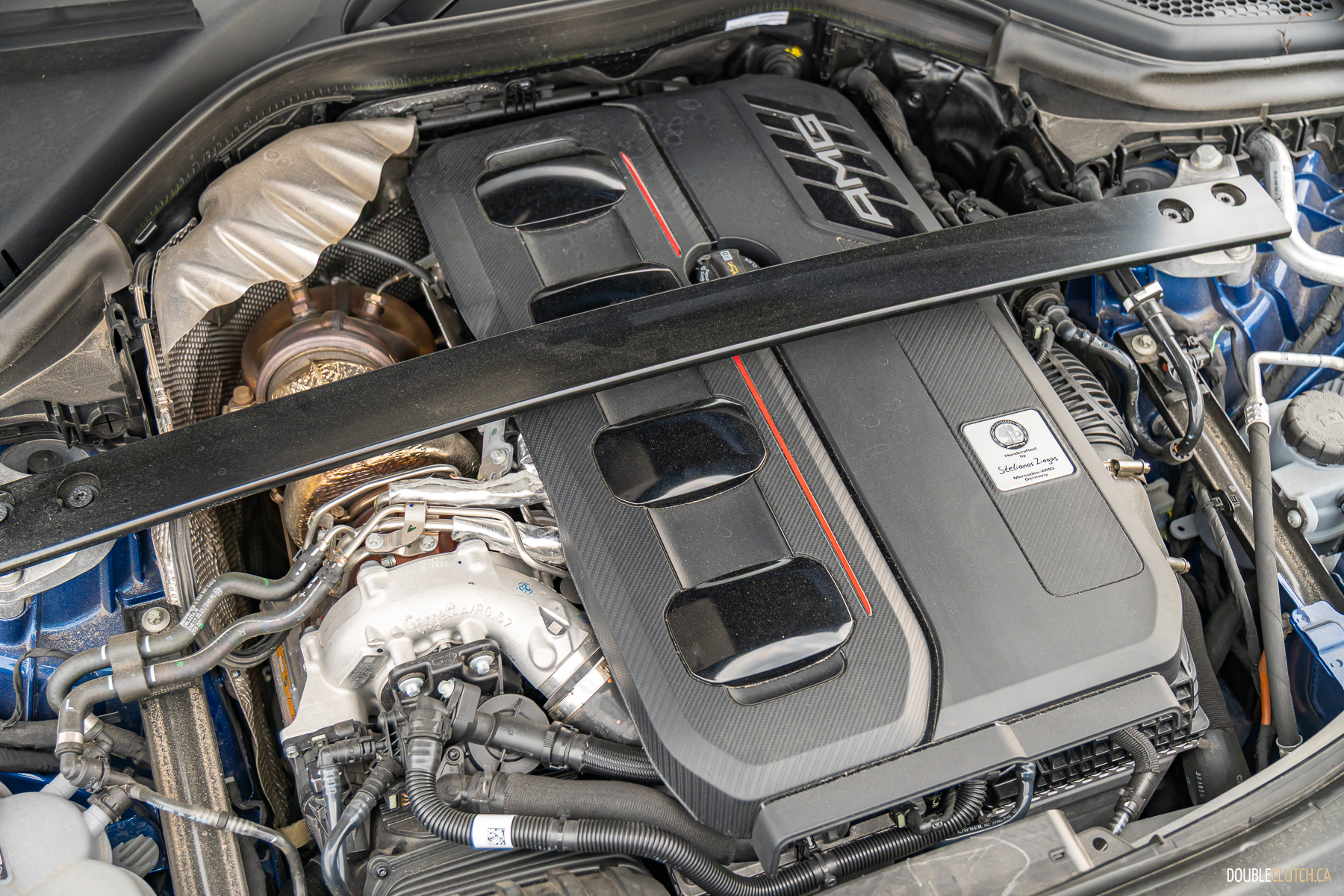
More with less
It is, by a distant margin, the angriest four-cylinder engine ever offered with a factory warranty. It produces 469 horsepower on its own; combined with the plus-sized electric motor built into the rear differential, total output is a staggering 671 horsepower and 752 pound-feet of torque. Electric vehicles may have taken the novelty out of quick cars, but those numbers are a huge improvement over the already ferocious V8 and and puts the 2025 GLC 63 in line with some of the most powerful vehicles you can buy. With a quoted zero-to-100 km/h run of 3.5 seconds — other outlets have reported faster — it’s among the quickest SUVs ever built, and deep into supercar territory.
But as everyone and myself have made abundantly clear time and again, cars are supposed to be about more than raw numbers. AMGs, specifically, have always been synonymous with fire-breathing V8s, along with the undeniable sound, feel, charm, and clout that come with them. Sure, the new one’s fast, but surely this four-cylinder GLC 63 will come apart at the seams as soon as you start evaluating the intangibles, right? The C 43 sure did, and it wasn’t being stressed nearly as hard.
I am here to report that it is, in fact, rather good. If you were deaf, the 2025 GLC 63 would be a revelation.
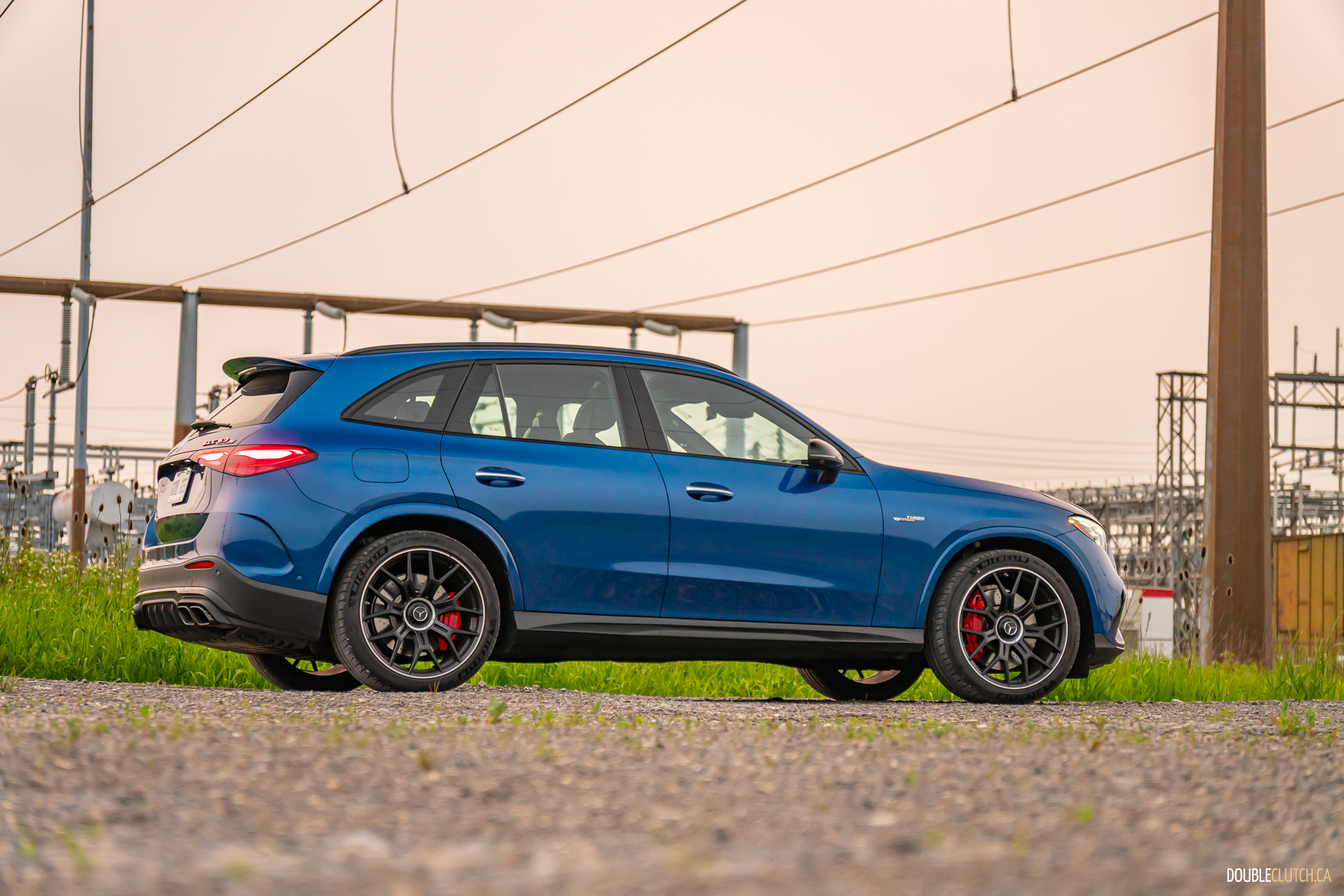
How does the new GLC 63 drive?
This isn’t to hate on the sound of this four-cylinder. That horse has already been pulverized into a fine mist, but the fact of the matter is, it’s an unremarkable synthesized four-popper blat. Our beloved and benevolent managing editor […who just booked the first October press car! —Ed.] didn’t mind it in the GLC 43, but next to the chest-pounding thump of the V8, it was never not going to be a huge letdown. But if you put the comparison aside and focus on what’s happening here and now, you might enjoy yourself. It sounds tough enough, and engages in all the requisite snap-crackle-pop fanfare you’d expect of a modern performance machine. It has a lot more theatrics going on than something like, say, the new Audi SQ5.
More than just the noise is the feel of the engine and how it builds power. Mercedes actually nailed it with the new GLC 63. It’s smooth in its operation, and the electric motors — both between the rear wheels and connected to the enormous turbocharger — ensure that it never feels anywhere close to ick-words like gutless, laggy, or peaky. Throttle response is EV-instantaneous at all times, and power builds with linearity and alacrity.

How about the rest of the powertrain?
Power delivery and management is just as important. The new GLC 63 handles it all exceedingly well. Its AMG-tuned nine-speed automatic is incredibly slick and fires off shifts with satisfying immediacy, whether they’re self-guided or manually dictated. The transmission was a particularly sore point on the C 43 that sapped any confidence in the powertrain, and it’s remarkable to see how far they’ve come with it in such a short time; it’s roughly on par with the industry leading ZF8.
AMG’s interpretation of Mercedes’ 4Matic all-wheel-drive is adept at hiding when it’s working. It silently scrambles to find grip through its fat 265- and 295-section front and rear tires, throwing the GLC 63 forward absolutely as fast as possible. To my surprise and delight, it also takes very well to being thrown around a corner, taking direction from a well-weighted, tightly dialed steering rack that does a good job of relaying what’s happening on the road back to your hands. The GLC 63 turns in eagerly, stays eerily flat, and exits like it’s on rails. Balance is quite neutral and it will even organically engage in some sideways antics with its many dials set to kill and a pilot willing to pull the trigger.
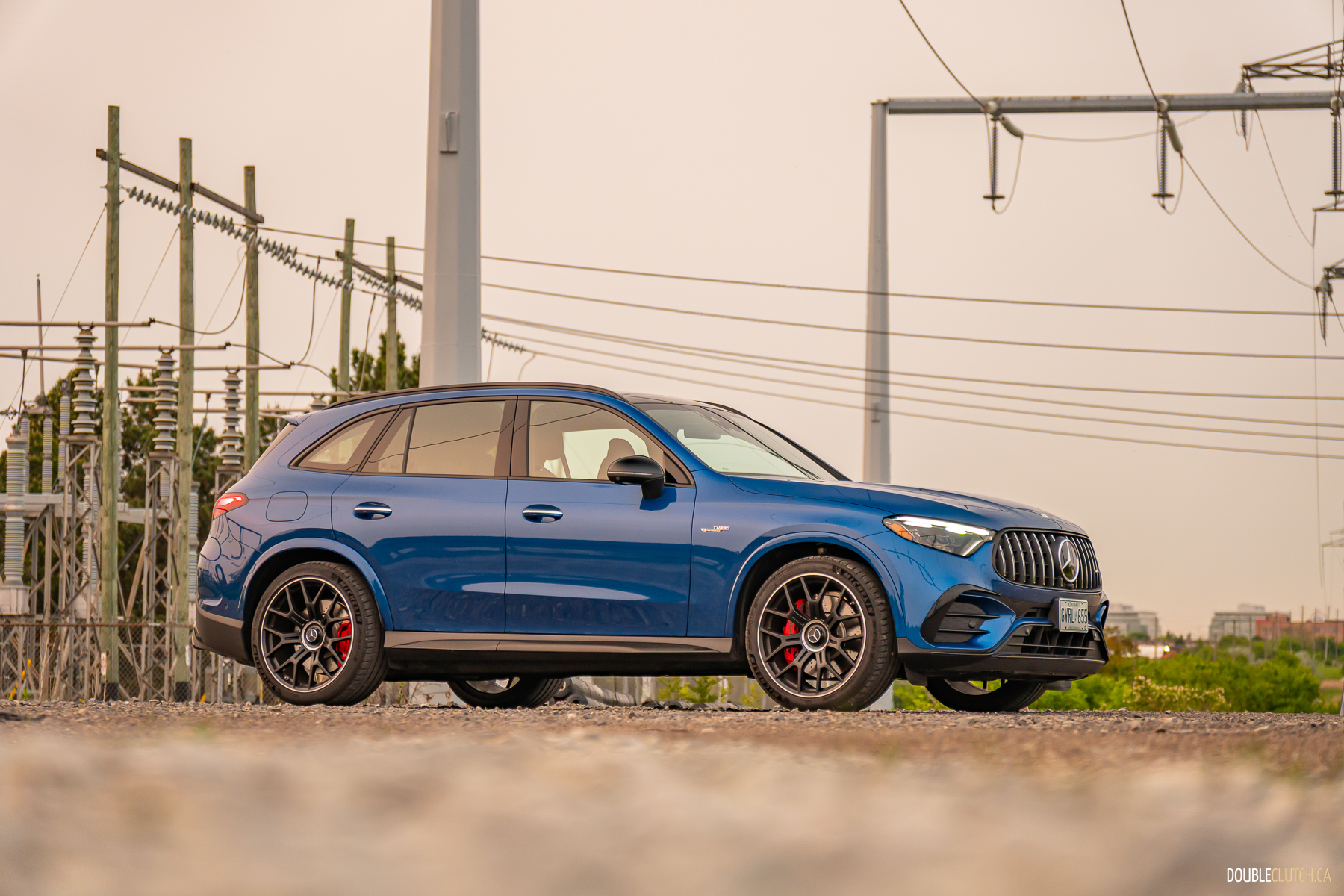
How does the new GLC 63 drive — as a hybrid?
On that note, GLC 63 is pretty smart about knowing when to pull the trigger on firing the gas engine. When it does, it does so with a deft sleight of hand. Were the furious little engine not imbued with prominent bassy vocals, I might be tempted to call it imperceptible, as we’ve seen on other hybrid Benzes. It’s properly slick, and they’ve gotten a lot smarter about when and how to use the stop/start system. The engine still shuts off while braking and coming to a stop, but the electric motors continue providing forward creep, eliminating the awkward shunt of a rapid stop once the engine stops providing locomotion.
To that end, brake pedal feel and integration with the regenerative system is dramatically improved; it’s still not the best, but it’s on the way there, and is far cry from how awkward it is on some electrified Benzes. Ride comfort on the GLC 63 is somewhat bewildering; every fast Benz we’ve driven lately has been pretty flinty and rough around the edges, including the aforementioned GLC 43. This GLC 63 defies the odds and somehow rides considerably better than that; it’s taut to be sure, but never unpleasant. The only somewhat plausible explanation I can come with is the reduced unsprung weight of our tester’s forged 21-inch wheels, unless Mercedes keeps a special suspension calibration set aside just for the GLC 63.
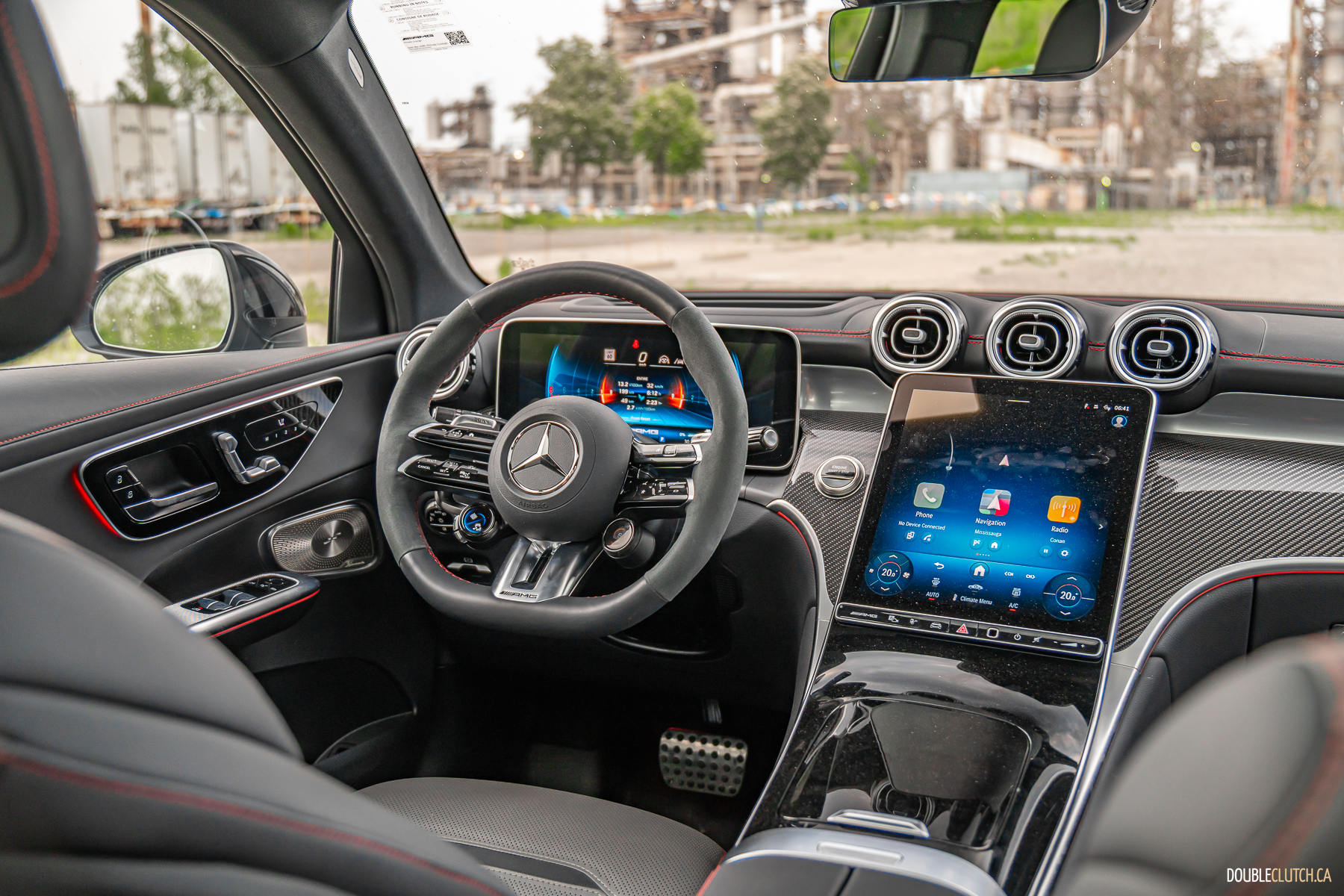
Interior design, practicality, and tech
That reminds me: it’s as though Mercedes did set aside a special build-quality parameter for this GLC 63. It was largely — but not entirely — free of the unbecoming creaks and rattles in it’s glossy, floating waterfall of a centre console and dashboard that have plagued other Mercedes vehicles. Everyone around the office noticed this, independently of each other, along with all the other accolades I’m singing.
Beyond all that, it’s a Mercedes. Their driver assist technology works well, the infotainment has a bit of a learning curve but is quite useful once you’ve taken some time to familiarize yourself with it, and it’s snappy and well-presented. There’s a healthy amount of storage space, the seats, driving position, and visibility are excellent, the rear seats are among the most spacious in the class, and cargo space is commodious. Despite packing so much potency, it’s a practical thing, and it even pulled off impressive average fuel efficiency of 11.7 L/100 km over the week.
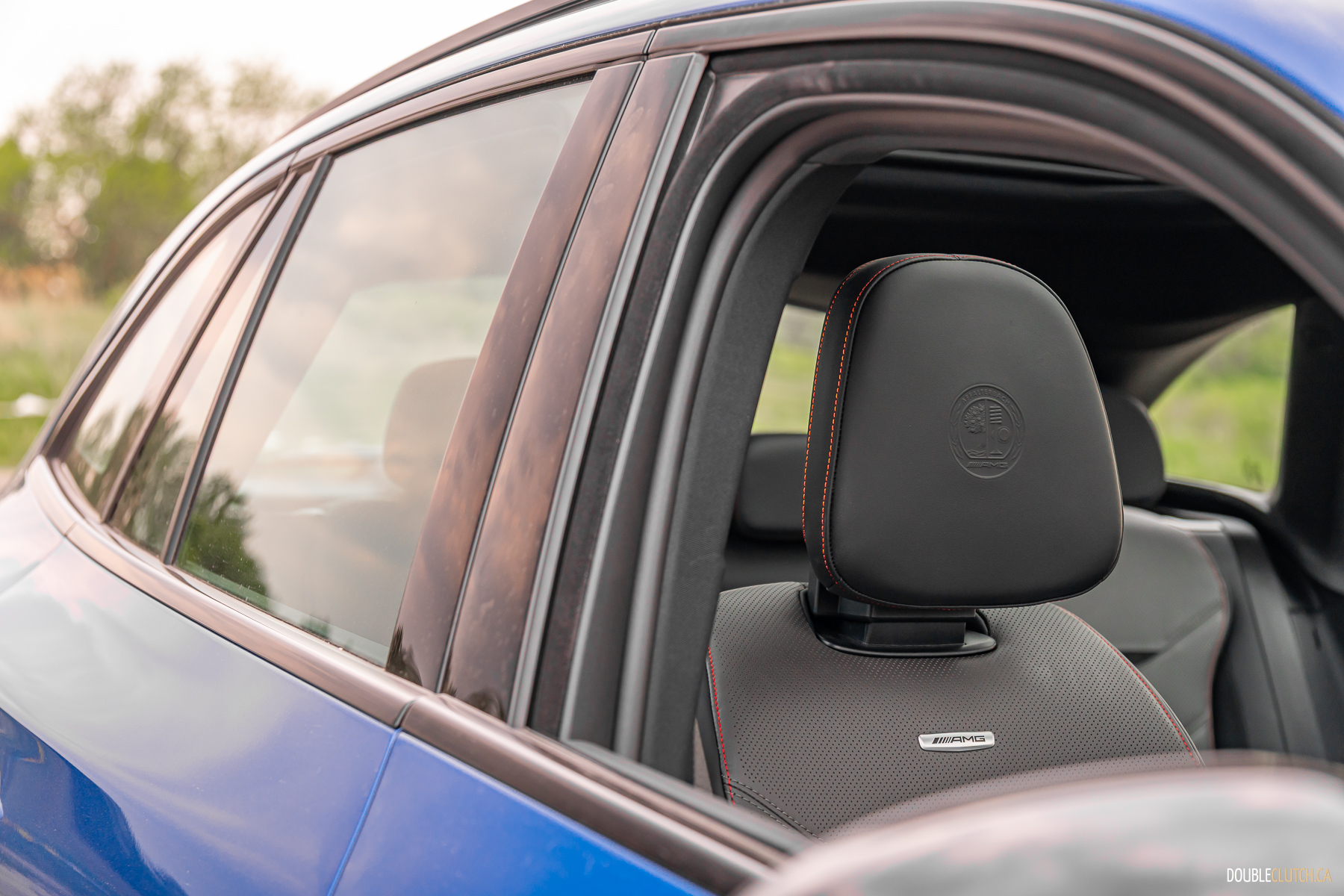
Final thoughts
It was roundly assumed around the office that I only called dibs to dunk on it, as the kids say. That couldn’t be further from the truth. I genuinely wanted to see this wacky engineering exercise live and breathe as I live and breathe, and I came away extremely impressed. The pain points that I expected to see fell away, leaving only the lack of a V8 soundtrack as a key sticking point. The direct counter-argument against that is dramatically improved performance and efficiency … if you care about that more than eight-cylinder projection.
This isn’t to say the GLC 63 is without pain points beyond the obvious auditory deficiency. According to Mercedes’ advertised power numbers, it should be roughly on par with the new BMW M5, but it doesn’t feel like it. Don’t get me wrong, the GLC 63 fast, but it’s so composed and undramatic that it doesn’t feel nearly as fast as our butt-dyno readings suggest, whereas the M5 feels wild, for better or worse. But I could write a whole column about power numbers.
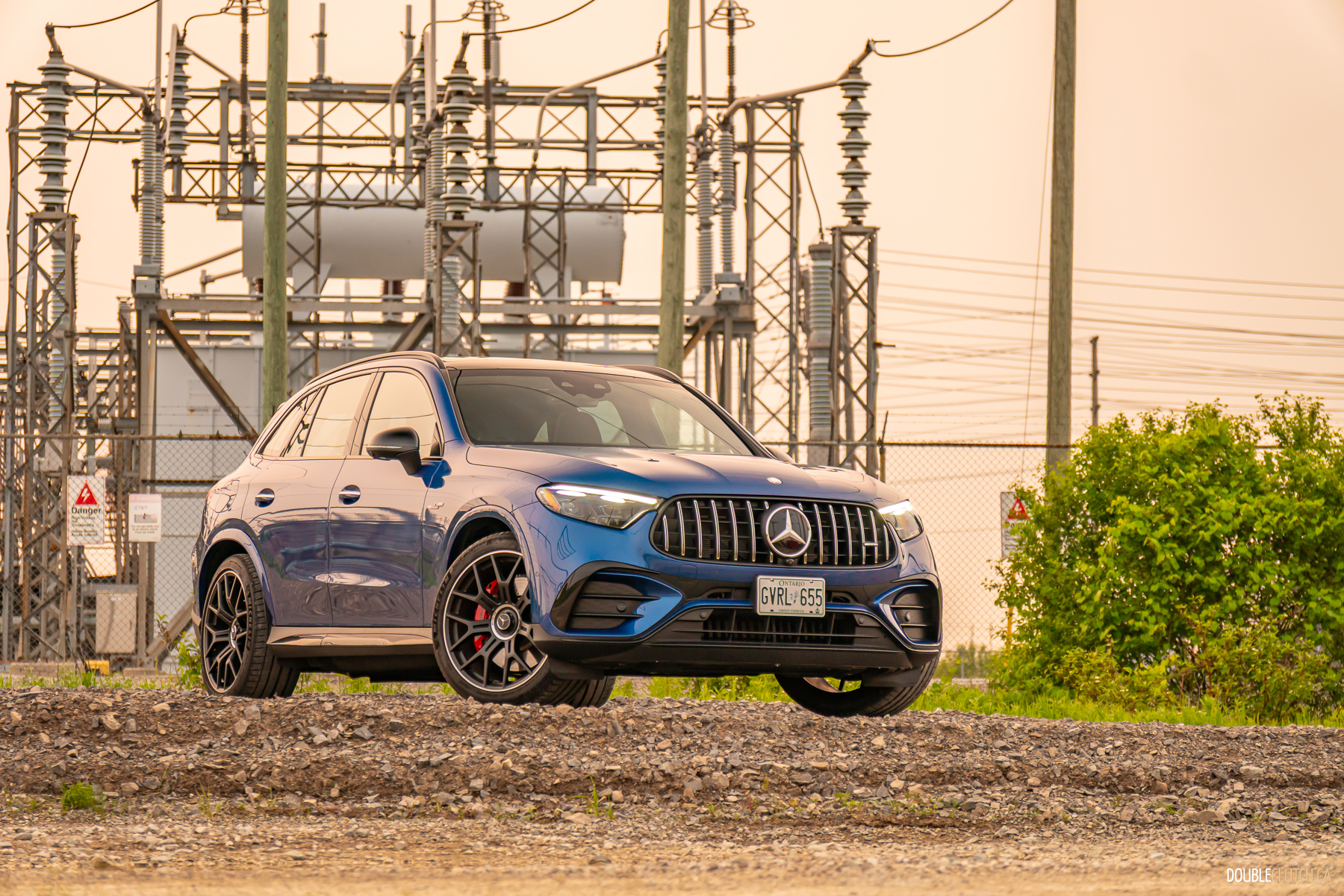
The other issue is pricing. The GLC 63 may start at $109,500, but this one rang in at $138,150 as-tested. The problem here is twofold: unless you’re constantly hammering it, it looks, feels, and sounds the same as the much cheaper GLC 43. BMW doesn’t currently make a direct competitor to this, but the much larger X5 M Competition offers a larger vehicle with very similar seat-of-the-pants performance and the “correct” number of combustion chambers for not much more.
I’m not sure who the 2025 Mercedes-AMG GLC 63 S is for. If you’re focused on the numbers, you’ll probably just get an EV. While this is prepared to do battle on a track, who really is taking these to the track? These will be street warriors; toys for people that have had to make practical concessions but don’t want to compromise on any part of the experience. That may be a very specific niche, but that’s who I see going for this, because it’s fabulously well suited to the task. You’ll probably forget about the missing V8 noise after you’ve made enough of them vanish behind you, anyway.

